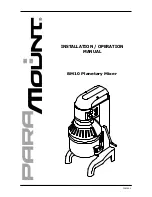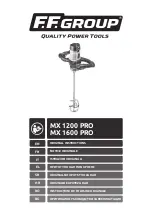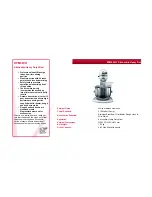
11
MONITORING, SOLO, & METERING
Usually an engineer listens to the left/right
mix (with the center mix blended in), just as
the audience is hearing it. Signals available for
monitoring by the engineer are available via ei-
ther of the high-powered headphone outputs,
with level control, or a line-level monitor (con-
trol room) output, also with level control.
There is a stereo insert dedicated to the
phones mix, to allow a delay device to synchro-
nize the distance delay present in large halls.
To audition individual signals or groups of
signals, there are solo switches on every chan-
nel, main aux return, aux send master, matrix
A–D, tape return, and sub 1–8, as well as the
left/right/center faders. The engineer behind an
SR40•8 can listen to any signal, individually or
in groups, without disturbing the content of any
of the console’s primary outputs. Input signals
(channels, main aux returns, “B” aux returns,
tape A, and tape B) can be globally switched
PFL (pre-fader-listen) or AFL (after-fader-lis-
ten, stereo-in-place). Output signals (main/left/
right, subs 1–8, aux send masters, and matrix
A–D) have a similar switch.
There are 59 twelve-segment LED-ladder
meter displays on the SR40•8, one for each
channel and sub, two for each stereo main aux
return, and one each for the left/right/center
main mixes. Input and output meters can each
be globally switched PFL or AFL. During solo,
described earlier, the left/right/center meters
automatically display the solo levels: AFL on
the left/right meters and PFL on the center.
TALKBACK & INTERCOM
The SR40•8’s extensive talkback section al-
lows the engineer to speak into several outputs
via a master talkback switch, with assignment
switches for aux 1–4, aux 5–8, L/R mix, an
external talkback output, and one switch for
each matrix (A–D). Talkback microphones are
patched into either of the two phantom pow-
ered XLR inputs and regulated by a level
control. Additionally, the talkback signal may
be replaced by a 400Hz sine wave for checking
levels, or pink noise for quickly checking
frequency response.
The Clear-Com
®
Intercom System is already
standard equipment in most large facilities. It
allows all crew members to share a “party line,”
so they may communicate at will, without
having to toggle between send and receive.
The Mackie SR40•8 takes that a step farther
by allowing the engineer to join in at his/her
discretion using the talkback microphone and
phones outputs: No separate intercom headset
is required for the engineer.
ULTRA MUTE
™
Almost every signal path in the SR40•8
has an electronically-controlled mute switch,
including the channels, main aux return, sub-
groups, aux sends, and matrices. These mutes
may be activated in four ways: By pressing the
local mute switch included for each path, by
assigning paths to a mute group, by assigning
paths to a mute snapshot, or by external MIDI
and RS232 commands. Using just the local
switches and mute groups, an engineer can
quickly mute or un-mute large groups of signal
paths. Using an external sequencer to generate
MIDI muting commands, complicated muting
moves can be made automatically, with no
user intervention.
When a channel or main aux return is
muted, the entire channel is muted, including
the assign outputs, pre- and post-fader aux
sends, and direct out. The insert send remains
active, as do the channel’s PFL meters and
PFL solo outputs.
SWITCH POSITIONS
You may have noticed the white lines
printed just above most of the push-button
switches on your SR40•8. We’ve put them there
to make it easier for you to see if the switch is
engaged (down). Here’s how they work:
Assuming you are sitting in front of the con-
sole, when a switch is disengaged (up), its
button hides the white line from your field of
vision. When you engage the switch, the line
suddenly appears. Although it may not seem
obvious at first, you’ll soon find that the indica-
tor line really helps you determine switch
positions at a glance. Clever, ain’t it?












































